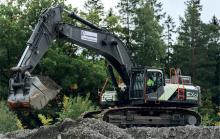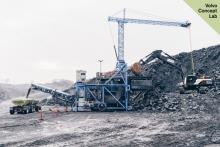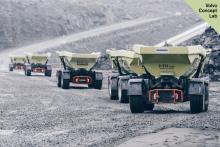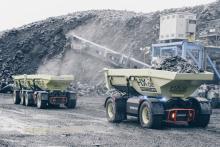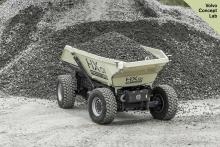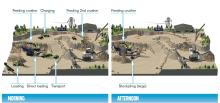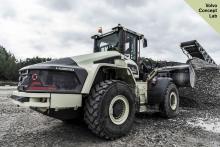Volvo Construction Equipment and Skanska are testing electric and autonomous machines at Skanska’s Vikan Kross quarry near Gothenburg, Sweden. The 10-week emission-free project is expected to reduce carbon emissions by 95% and the total cost of operations by 25%.
Called Electric Site, the partnership intends to electrify each transport stage at the site while using what it calls a negligible amount of diesel power. The quarry produces aggregates for construction purposes as well as for asphalt and cement.
Gunnar Hagman, CEO of Skanska Sweden, says Electric Site could serve as a blueprint for transforming the efficiency, safety and environmental impact of quarries around the world.
Under the agreement, three rigid haulers have been replaced by eight smaller prototype HX2 autonomous, battery-electric load carries to transport material from the primary mobile crusher up to the secondary static crusher.
Uwe Müller, chief project manager for Electric Site at Volvo CE, says: “The HX1 was our proof of concept. Once we knew it was feasible, we updated the design requirements for the HX2 to incorporate shared technologies and components from the Volvo Group, such as electric motors, batteries and power electronics. Integrating a completely new drivetrain was crucial to take full advantage of the groundbreaking electromobility developments that are happening inside the Volvo Group. Another new feature is the addition of a vision system, which allows the machine to detect humans and obstacles in its vicinity.”
Meanwhile, the primary crusher is loaded by the 70t dual-powered, cable-connected EX1 excavator prototype. The base machine is a Volvo EC750 model which has been upgraded to incorporate an electric motor in addition to the diesel engine.
Müller reveals a significant amount of repackaging work was required to fit the new components in the machine without increasing its size. The crusher’s operator interface and controls remain the same and is operated in the same way as a traditional Volvo excavator. It will automatically start in electric mode if the cable is connected.
“Because the machine will be relatively static – only moving a few meters once or twice a day as the excavator works its way through the blasted rock – it’s ideally suited as a fully electric machine on a cable. This has allowed us to make it a zero-emission excavator when it’s plugged into the grid. However, we’ve designed it with flexibility in mind, so that we have the option of using the diesel engine when it’s needed, for example, to reposition the machine or quickly move it prior to blasting,” Müller concludes.
Volvo CE’s prototype electric hybrid wheel loader organises the piles of material on the site and is estimated to improve fuel efficiency by 50%. LX1 is a series hybrid which incorporates a driveline that consists of electric drive motors mounted at the wheels, electric-driven hydraulics, an energy storage system, a smaller diesel engine and new machine architecture.
Melker Jernberg, president of Volvo CE, says the site solution is not yet available for sale.
“We will evaluate the outcome of the tests but we have learn't so much already, elements of which will be fed into our future product development,” Jernberg adds.
More information is available on the website.
